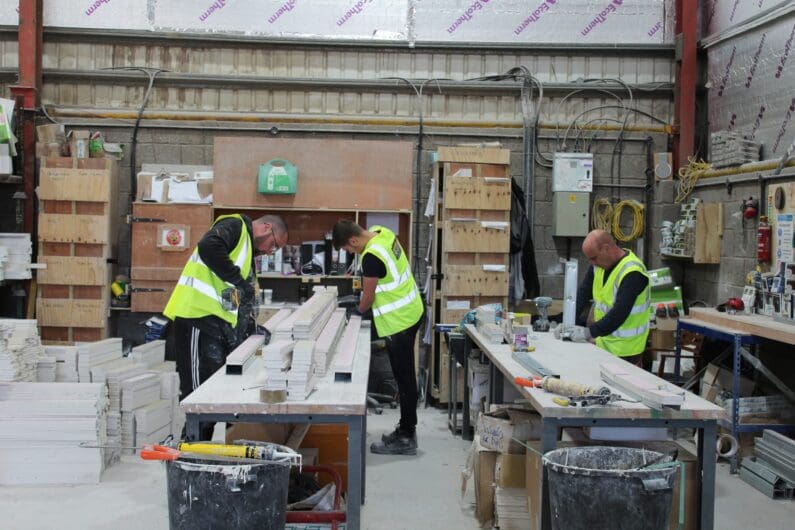Mould is a classic nuisance you are unfortunately likely to encounter at some point as a homeowner. Mould usually begins to form in rooms that are prone to humidity – such as basements, utility rooms, bathrooms, and kitchens. Damp air, high temperatures, and little ventilation is the perfect formula for mould to start forming. If you have found mould on your drywall, you might think that the panels need replacing straight away. However, don’t fret yet! As one of the leading bespoke drywall suppliers, here at Drywall Pro-Cut, we’ve put together some top tips for removing mould from your walls.
Related: What is Drywall?
Step 1: Choose A Cleaning Agent For Removing Mould
When it comes to cleaning agents, you should always try and use natural detergents first before you move on to chemicals. Depending on the severity of the mould on your drywall, there are a few solutions you can try:
- Baking Soda – one part baking soda and five parts water is a mild solution but also one of the safest to try when it comes to cleaning agents.
- Vinegar – Vinegar is also an effective solution to use, simply mix with equal parts water for a cleaner that is more potent than the above. This solution is also safe to use around children and pets.
- Laundry or Washing Up Detergent – use the solution by itself to treat any mould or spores residing on your drywall. This solution is also safe to use around children and pets.
- Bleach – mixing one-part bleach with three-parts water provides a very potent solution. This is best used to treat large amounts of mould.
Once you have found the best solution for cleaning mould from the drywall, pour it into a spray bottle so that you can treat any mould instances again.
Step 2: Safety Precautions
When dealing with mould and the chemical detergent to get rid of mould, it is important that the room is kept well ventilated. We recommend opening some windows or using a fan to create ventilation. If using bleach, you should also wear a mask and gloves.
Step 3: Removing The Mould On The Drywall
Spray your chosen solution onto the mould, spraying just enough to cover the mould area but not over saturating it. Using either a soft bristle brush or a sponge (depending on the amount and thickness of the mould) gently scrub the area to remove the mould. You can also use a toothbrush or the abrasive side of the sponge. Once you have cleaned the mould off, gently pat the area dry. It is important that the drywall is dried properly, if left damp, you can easily invite more mould to grow.
Related: Drywall Maintenance Tips
Drywall Suppliers
If you have faced reoccurring issues with mould on your drywall, it is important to assess the area itself to determine what is causing the mould to grow so often. Dehumidifiers are a great way to help prevent mould from growing in a room. They also ensure there is enough ventilation can sometimes be enough to keep mould at bay.
To find out more about looking after your drywall, or to purchase custom drywall products from a leading supplier? Then get in touch with our team today. You can explore our website for more information, or email enquiries@drywallpro-cut.co.uk to speak to a member of our team.
If you have found this blog helpful, then you may wish to read our previous blogs Drywall Benefits or offsite Production


